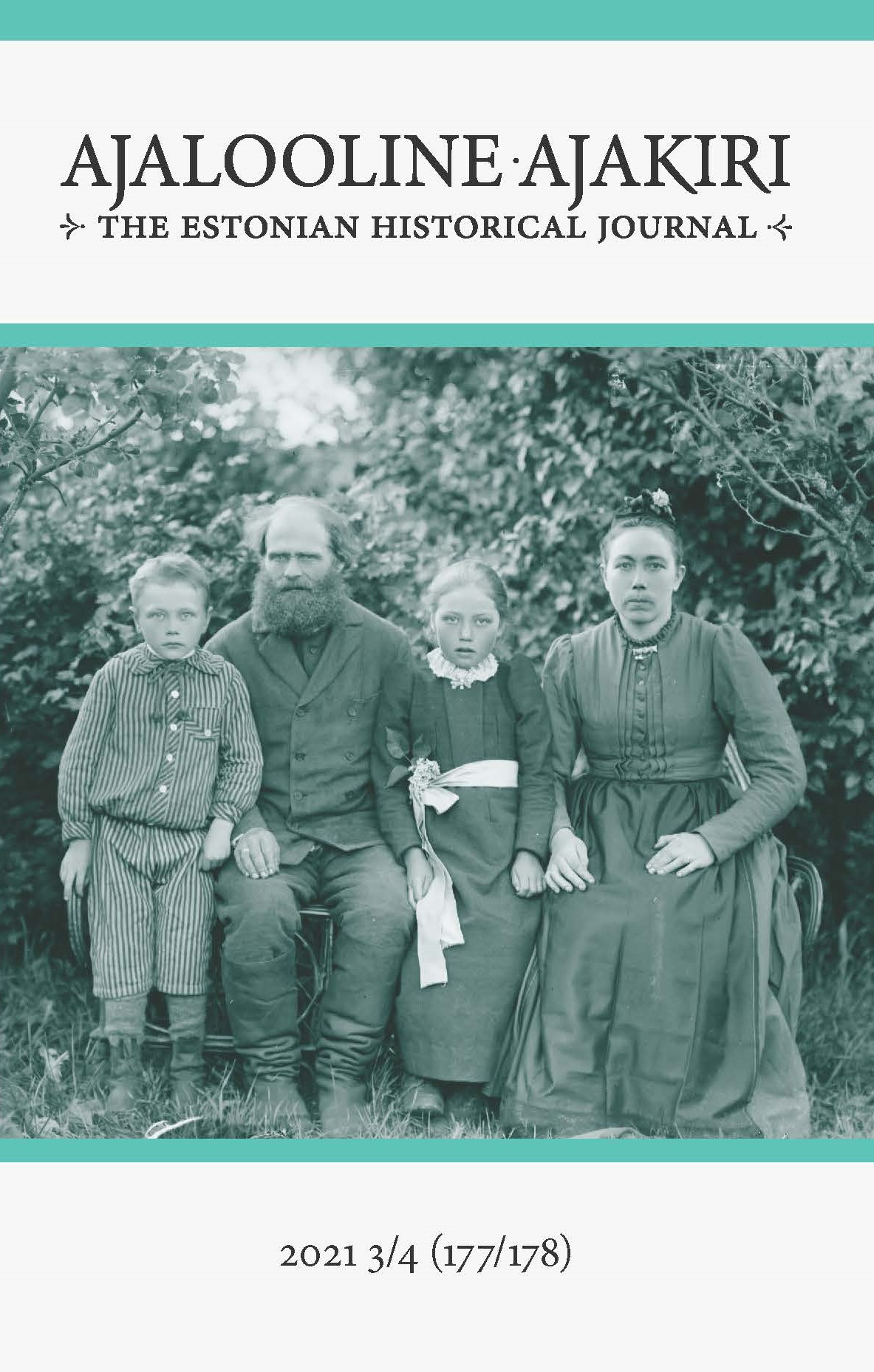The zenith of the Malthusian or Western European marriage pattern in Estonia
DOI:
https://doi.org/10.12697/AA.2021.3-4.01Keywords:
marriage, Mathusian marriage pattern, demography, Estonia, 19th centuryAbstract
This article analyses the trends and spatial patterns of i) the mean age at first marriage and ii) the proportion of people who remained single by the age of 45 for Estonian men and women born in the latter half of the 19th century. First, trends in these two indicators and for the two sexes are analysed for people born in 1850–99. Second, spatial patterns for both indicators and both genders are investigated at the municipality level for the cohorts of 1875–94. Third, this spatial data is linked to other socio-economic and cultural variables derived mostly from the censuses in order to explain the causes of the spatial clustering of marriage indicators.
The theoretical reasoning for this article rests on the work of Thomas Robert Malthus and John Hajnal. Malthus is famous for explaining the demographic-economic dynamics of a traditional agrarian society in which periodic increases in mortality occur, lowering population numbers that have reached the carrying capacity (limit of available food) of an agrarian society. But Malthus (1798) was also the first to describe a phenomenon that was present in the upper and middle classes of his contemporary Britons, which also resulted in containing population growth. To be more precise, Malthus observed that people got married in their late twenties (thus postponing the start of their childbearing period); and that a considerable proportion of people remained single (thus they did not bear any children at all).
Thomas Hajnal (1965) used considerable census material from the late 19th and early 20th centuries to place these observations on a sounder foundation. He claimed that a unique marriage system was prevalent in the countries of Western Europe. Namely, people married late (women around the age of 25, men around the age of 29) and 10 or more percent of the population remained single. Hajnal hypothesised that European uniqueness in this regard could in fact be linked to a higher standard of living in Europe from the Early Modern period onwards. Several economic historians have recently claimed that this was in fact the case, and that the Western European marriage pattern was one of the causes of European economic headway compared to other regions of the world (for example van Zanden, de Moor and Carmichel 2019).
In the case of Estonia, little research has been conducted on the prevailing marriage system. Heldur Palli (1984, 1988) has studied the demographic situation in a few parishes during the 18th century and has shown that the Western European marriage pattern was present in the Estonian countryside in the late 18th century, if it can be assumed that these parishes constitute a representative sample of the country. Later researchers have cited Palli and early 20th century census and population statistics material to make the same claim.
Here a novel data set, the Estonian Family Register, is used to analyse marital dynamics during the time of general societal modernisation in the late 19th and early 20th centuries. Gortfelder (2020) has previously used and described the Family Register. Its main advantage is that cohort analysis can be used, which makes it possible to precisely pinpoint the values of mean age at people first married and the proportion of persons remaining unmarried by the age of 45. There are also disadvantages, the greatest of which is the issue that the data for some municipalities is wholly or partially missing due to the ravages of the Second World War.
The analysis shows that for men and women born in 1850–1899, the mean age at first birth was stable. For men it was at 29–30 and for women at 25–26 years of age. Regarding persons who remained unmarried, change was slightly more pronounced. The proportion of women rose from 15 to 18 percent, while that of men rose from 9 to 13 percent.
Spatial patterns of mean age at first marriage are mostly the same for both men and women. Namely, marital age is higher in urban areas and in the counties of Viljandi, Valga, Tartu, and Võru. The greatest sex differences are found in the West Estonian islands. From the perspective of women, marriage occurred relatively late in these areas; for men the situation is the opposite. The youngest marital ages are evident in Petseri County. The picture is mostly the same regarding the proportion of persons who were not married by the age of 45.
In the studied cohorts, there are more single people (by the age of 45) in urban areas and the counties of Viljandi, Valga, and Tartu. Regarding women, Lääne County also had high values. Once again, the western islands have a very different rank by sex. A sizeable proportion of women remained single by the age of 45, while only a small percentage of men remained bachelors.
Finally, a number of variables can explain the spatial patterns of mean age at first marriage and the proportion of persons remaining single by the age of 45. For example, the sex ratio of young adults is a crucial factor. If there were relatively few men in an area, more women remained single and married late. Also, variables related to economics are important. Agrarian areas with a more market-oriented economic structure featured later marriage and a larger percentage of single men.

